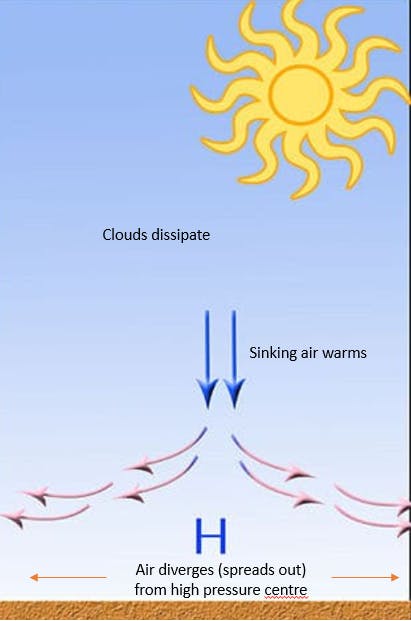
- Credit
- Wikihow.com, modified by Lisa Erven
Atmospheric subsidence is the downward movement (sinking) of air parcels in the atmosphere. It is the opposite of atmospheric lift. This movement compresses the air, which increases both the temperature of an air mass and its capacity to hold water vapour. The net effect is a lowering of an air mass’s relative humidity, and the dissipation of clouds and precipitation.
While subsidence often leads to clear skies, a caveat is the formation of valley cloud and the associated drizzle or light, fine snow (frozen drizzle), and/or extensive valley fog. This happens because subsiding air acts as a lid, gradually lowering overtime, trapping moisture and pollution into a smaller and smaller volume. Additional water vapour content may be added from evaporation off open water bodies. When the weather is stagnant, subsidence and evaporation, combined with nighttime cooling, can lead to saturation (the formation of fog or valley cloud). This is common during fall and winter in the mountains.
Timing and success of dissipation, or “burn off”, depends on the strength of the sun (solar angle, length of day), strength of the subsidence inversion, depth of the cloud/fog layer, and local wind patterns.